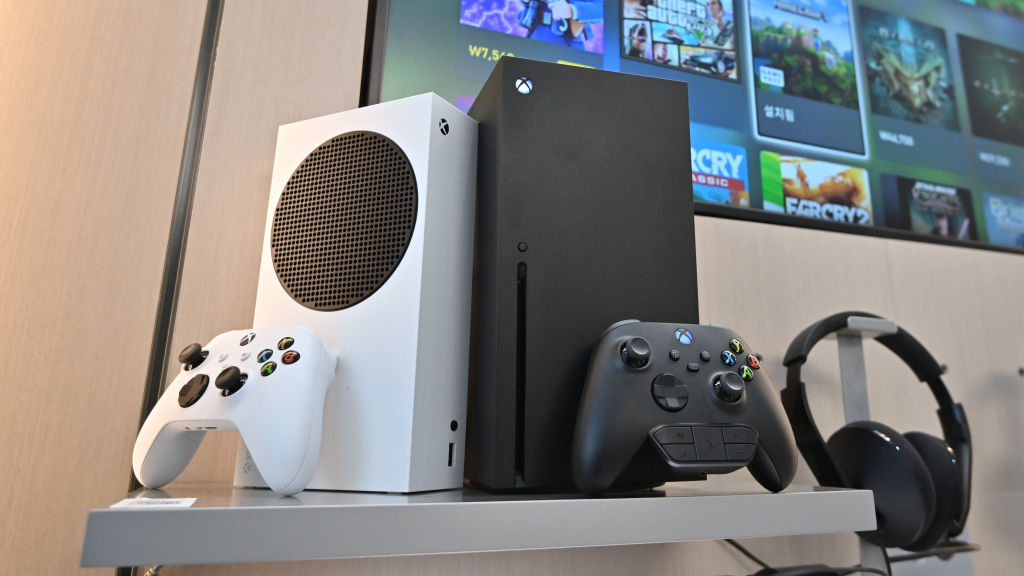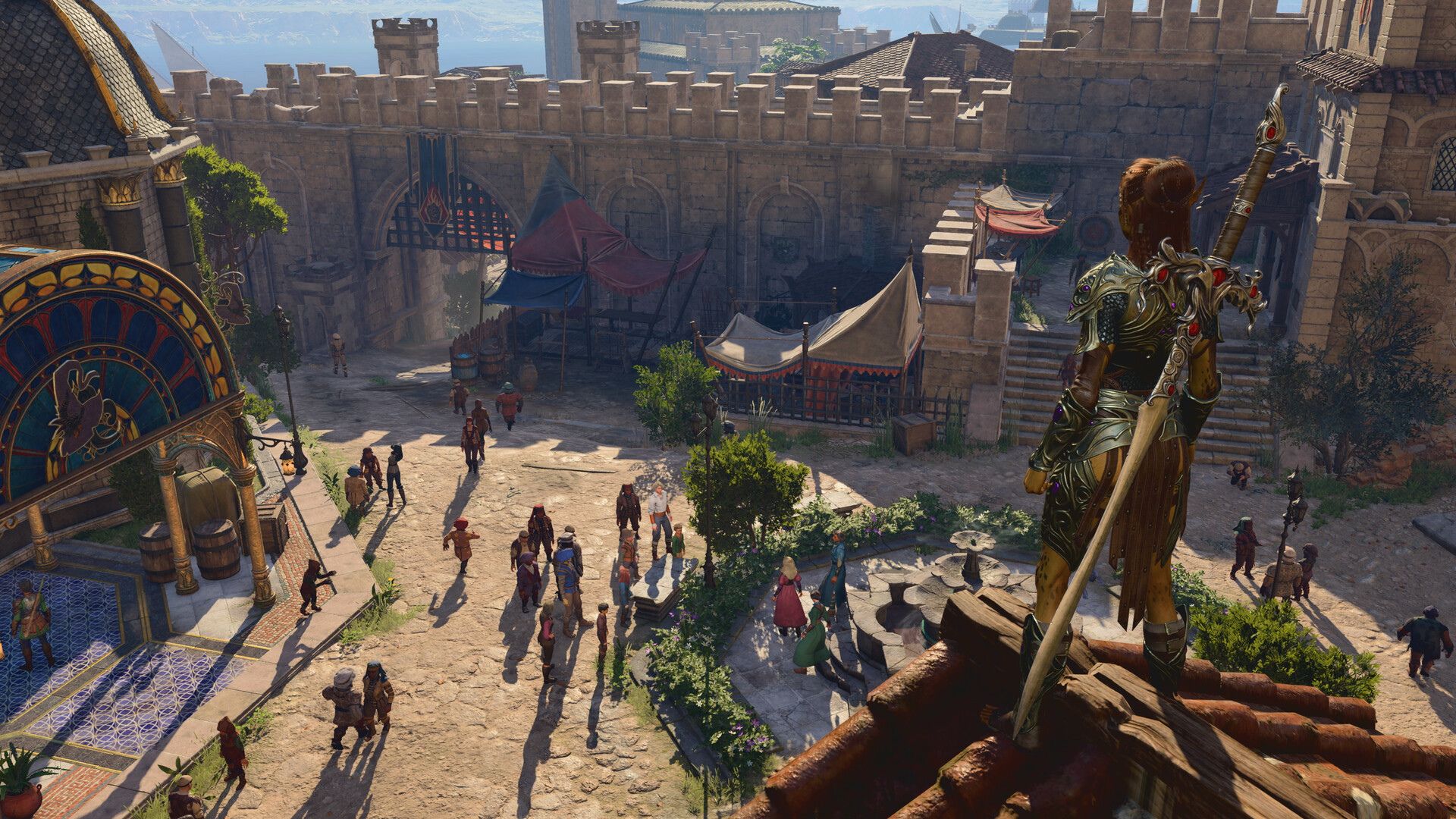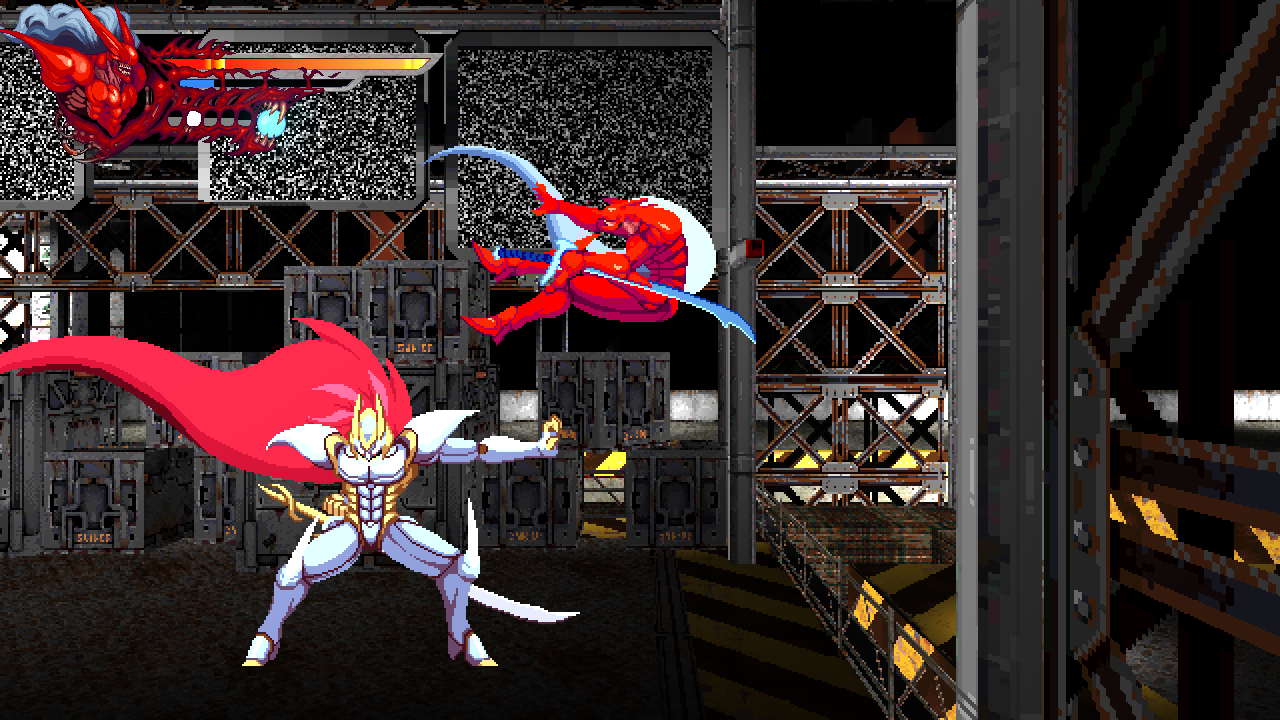Is the Xbox Series S holding games back? I asked developers to find out
A closer look at the most affordable Xbox

The Xbox Series S occupies a very unique position in the current gaming landscape. A much more affordable alternative to the powerful Xbox Series X, it’s the perfect gateway into current-generation gaming if you don’t want to break the bank.
It’s my personal Xbox of choice, thanks in no small part to the truly unbeatable value that it presents when paired with an Xbox Game Pass Ultimate subscription. Being able to dip into an ever-expanding library for a modest monthly fee is a game-changer, and Microsoft should be commended for its efforts to reduce the financial barriers that gamers need to overcome in order to play.
As with any budget-friendly gaming product, this lower price tag is reflected in the relative power of the hardware on offer. Perhaps the starkest difference is that the Xbox Series S sports a significantly less powerful AMD RDNA 2 GPU with a lower clock speed than the one found in the flagship model. The system also has 6GB less RAM to work with, and this means that the Xbox Series X broadly performs better across the board as a result.
Parity problems

The Xbox Series S isn’t the only example of a relatively weak console currently on the market. The Nintendo Switch is comparatively even more underpowered, being built on what is effectively a mid-range mobile chipset from the late 2010s. Unlike the Nintendo Switch, however, which is very much in its own little ecosystem, Microsoft’s offerings are inextricably linked.
Both consoles share the same library, meaning that developers making games for the more powerful Xbox Series X also have to ensure that they will run to a satisfactory standard on the Xbox Series S. Microsoft began the generation by insisting on feature parity across both versions of a game too, preventing developers from simply cutting particularly intensive features from the Xbox Series S version.
This seems like a very sensible measure to protect owners of the less powerful console from receiving dramatically stripped-down ports; I still remember when Call of Duty: Black Ops 3 launched without its campaign on the Xbox 360 (while it was present on the Xbox One) and I really don’t want to see something similar happening now. Still, it’s hard to ignore the fact that this parity requirement is already starting to cause problems with certain titles.
The Xbox release of Baldur’s Gate 3, to name a particularly prominent example, arrived months after its PlayStation 5 counterpart with Larian director of publishing Michael Douse citing “a huge technical hurdle” in getting the split-screen co-op component running on the Xbox Series S. This, he said, meant that Larian was “unable to release the game on the ecosystem” at the time.
Get daily insight, inspiration and deals in your inbox
Sign up for breaking news, reviews, opinion, top tech deals, and more.
After a meeting between Larian CEO Swen Vincke and Xbox head Phil Spencer, the Xbox Series S version of the game was permitted to release without its co-op component. It’s unsurprising that this compromise was made given that Baldur's Gate 3 was one of the biggest titles of 2023, but it does set a worrying precedent.
Moving forward

There’s no official word yet, but it seems unlikely that many other games will receive the same treatment. While this is undeniably excellent for the consumer, it could pose some problems for developers at smaller studios who might struggle to get their titles running as the generation advances and technical capabilities are pushed to their limits. In order to learn more, I sat down with some developers with experience in multi-platform game development to hear their perspectives on the Xbox Series S.
Cass Carpendale is the CEO of Poppy Works, a studio that is currently developing the upcoming 2.5D hack-and-slash Slave Zero X which is being published by Ziggurat Interactive on Xbox One, Xbox Series X|S, PS5, PS4, and Nintendo Switch. Rose McKee is the game’s lead producer and is working with Neville Attard, the founder of game developer and console porter PolyCrunch Games, to help deliver the game across multiple platforms.
“Multi-platform development doesn't have to be difficult,” Carpendale explains. “Adding multi-platform support to a game that wasn't developed with that in mind is where the trouble comes from.” This could go some way to help explain some of the issues faced by Baldur’s Gate 3, which spent years as a PC exclusive title throughout its early access development.
“If the developers always keep the slowest platform they are targeting in mind, first and foremost, then the other platforms should be easier to deal with,” Attard adds. Using the example of the Nintendo Switch, which he describes as “far more limited than other platforms,” he says that developers “can also use lower quality assets/visual effects (VFX) for the lower-end platforms, but if the core still doesn't run well on a Switch, then it will be much more time-consuming to get it to run decently at a later stage.”
The developers also suggest that some console performance issues can actually be the result of software rather than hardware. “The issue we face more often is that opaque middleware can eat up far too much of a game's performance when compared to native code,” says Carpendale. “The overwhelming task of maintaining general-purpose game engines across every feasible platform at the same time results in varying support for those platforms and often massively exacerbates the performance gap between them.”
“We're now relying more on the software to do optimizations rather than getting to know the intricacies of the system to put it to better use. There are more layers between your game and the hardware, and more often than not, you're limited by that third-party game engine in between,” Attard continues. “You don't have access to optimize the game engine's code if, for some reason, it's not doing something in an optimized way.”
He points towards The Legend of Zelda: Tears of the Kingdom as an example of the kinds of results that developers can achieve with enough time and specialist expertise: “One would think Tears of the Kingdom shouldn't be able to run on the Switch, and yet it runs beautifully. Since they know the hardware inside-out, they can do the unimaginable with such old hardware. I'm sure they had a lot of prototyping time to get that kind of physics and graphics to run smoothly.”
Generational leap

While Slave Zero X is set to also release on previous generation hardware, it’s easy to see how developers exclusively targeting current-generation systems could face tougher challenges when ensuring compatibility with the Xbox Series S - especially thanks to the parity requirement.
Still, Carpendale suggests that the consumer benefit posed by a more affordable current-generation system makes that additional work worthwhile. “It's understandably frustrating if you run into issues meeting that [parity] requirement, but I think this is the kind of thing that benefits the consumers immensely, and a little bit of planning can make it a non-issue. Luckily for us, Slave Zero X runs well on all the Microsoft platforms.”
“I think from a business point of view for Microsoft, this makes sense, as I think there could be a backlash from Xbox Series S owners,” Attard says. “Catering for more systems is always going to add more work, even just for respecting the guidelines of each platform. Adding technology restrictions on top that need to be catered for is going to take even more time.”
“We take immense pride in being a player-first company, where the paramount goal is to ensure that everyone can savor games on their preferred console,” adds McKee. “We view it as a worthwhile endeavor, recognizing that the increased workload is a small price to pay for the immense satisfaction we bring to a broader audience of gamers. We strive to make gaming experiences accessible and enjoyable for all, no matter the hurdles we might face.”
It's unknown whether other developers are willing (or able) to stomach the additional cost and resources associated with accommodating the Xbox Series S as technology and expectations continue to advance. However, the console’s unusual position will certainly make it interesting to watch. I also reached out to Microsoft for an official word on the role of the Xbox Series S and the feature parity requirement, but the company declined to comment.
For some predictions about what Microsoft might have in store, see what I want to see from an Xbox hardware revision. Also don’t miss my review of the Turtle Beach Stealth Ultra controller.

Dash is a technology journalist who covers gaming hardware at TechRadar. Before joining the TechRadar team, he was writing gaming articles for some of the UK's biggest magazines including PLAY, Edge, PC Gamer, and SFX. Now, when he's not getting his greasy little mitts on the newest hardware or gaming gadget, he can be found listening to J-pop or feverishly devouring the latest Nintendo Switch otome.